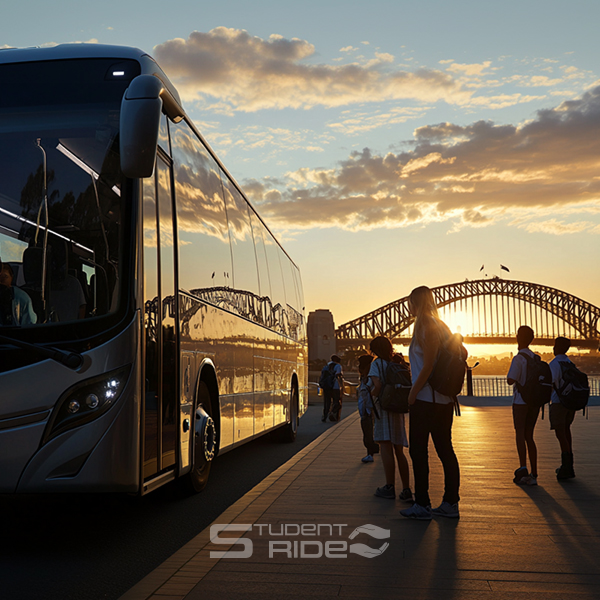
Safe & Smart
Simple School Transport
School Transport Solution
Ready to transform your school’s transport?
We’ve reimagined school transport with five key pillars—our 5Cs—that power your goals:
- Connect: Grow your reach and keep families linked with safe, reliable rides for every journey.
- Care: Boost trust with top safety & compliance, and real-time tracking from class to camps.
- Control: Free your staff with smart tools and support that simplify every trip.
- Cost Reductions: Save money and see returns with synced routes and efficient planning.
- Clean: Cut emissions and congestion with sustainable travel that fits your ethos.
Transport
- Your Own Buses
- Outsourced Buses
- New Supplier
Technology
- Parent Portal & App
- Driver App
- School Dashboard
Team
- Handle Parent Calls & Emails
- 24/7 Operational Support
- Dedicated Account Manager

About StudentRide
Welcome to StudentRide. We craft school transport solutions that fit your school’s unique needs. From home-to-school private routes to sports, trips and excursions — we’re here for independent schools of all sizes. We keep students safe, parents informed, and staff stress-free with custom options built just for you.
Why Choose StudentRide?
Every school is different. That’s why we tailor our solutions to match your exact needs. Here’s what we can offer:
- Custom Transport: Use your own buses, outsource them, or tap into our suppliers. We make it work for you.
- Smart Technology: Parents track buses via our app. Children tap on and off. Drivers stay compliant with our smart driver apps. Schools get a dashboard for full control. It’s all accessible anywhere via our web and mobile apps.
- Dedicated Team: We handle parent calls, provide 24/7 support, and assign you a personal account manager. You’re never alone.
- Safety & Compliance: Real-time GPS tracking, instant tap on/off notifications, and strict standards keep kids safe on every trip. Ensuring every vehicle and driver is fully compliant with the correct licenses and accreditations.
- Greener Rides: Reduce your carbon footprint and support sustainability initiatives by opting for smarter routes that minimize fuel consumption and emissions. Our service also helps alleviate traffic congestion during pick-up and drop-off times, further contributing to your sustainability goals.
The independent school transport market is hitting $2.5 billion by 2025. Demand for custom, efficient solutions is growing fast. StudentRide is leading the charge. We mix cutting-edge tech with a personal touch to solve your transport challenges your way.

Struggling With Transport Headaches?
We get it. School transport can be tough. Are you facing any of these?
Rising costs eating your budget
Pick-up and
drop-off chaos
Communication gaps
With Parents
Driver Shortages
or Turnover
Safety worries keeping you up at night
Vehicle and driver compliance stress
Ever-changing route optimisation (new students and leavers each year)
School trips and excursions
planning nightmares
We’ve got you covered. Our consultative approach digs into your school’s needs. We don’t just handle daily runs. We support transport for games, fixtures, trips, and even international residentials. Every solution is shaped to fit you.
Your School, Your Solution
Picture this: a transport system built around your school. Parents use our app to track buses and get tap on/off alerts. They know their kids are safe. Your staff manages bookings and live tracking through a 24/7 school dashboard. Drivers start each day with safety checks via our app. We optimise routes to save time and money. A quick tweak can mean less congestion, lower costs, and happier families. Whether you need us to run your buses or support your team, we customise it all.


Ready to Ride?
Join schools across Australia who trust us to solve their transport puzzles. Let’s build a safer, smarter, stress-free system tailored just for you.

Ready to Solve Your Transport Puzzle?
No matter your scenario, we’ve got a solution that fits. Let’s tackle your challenges—whether it’s driver turnover, cost management, or behavioural issues—and build a system that’s just right for your school.
